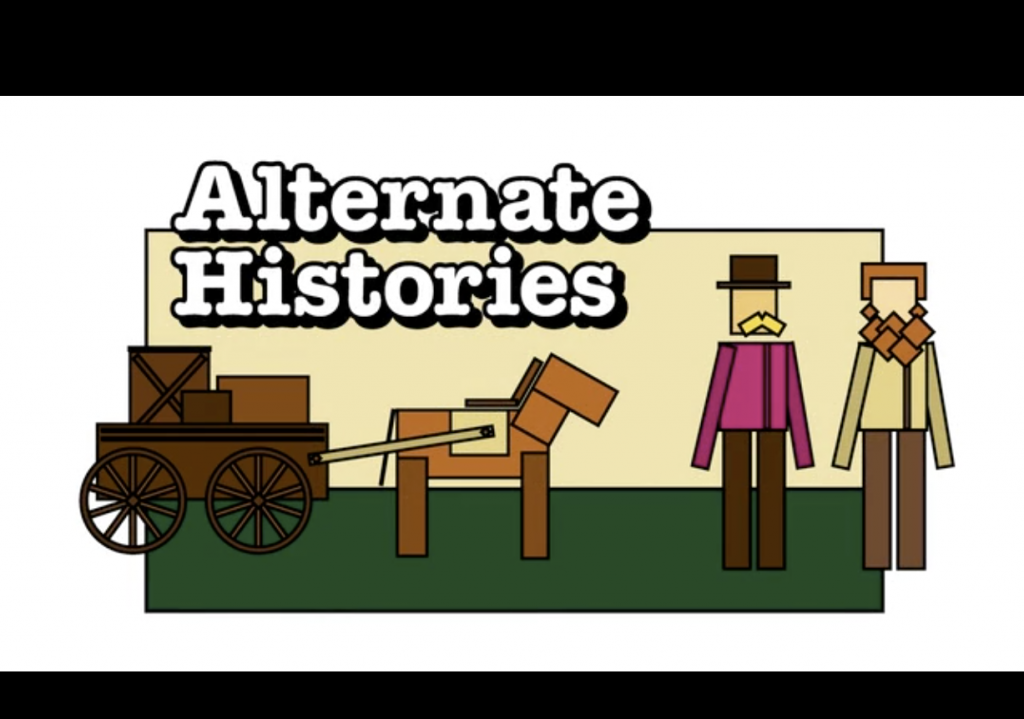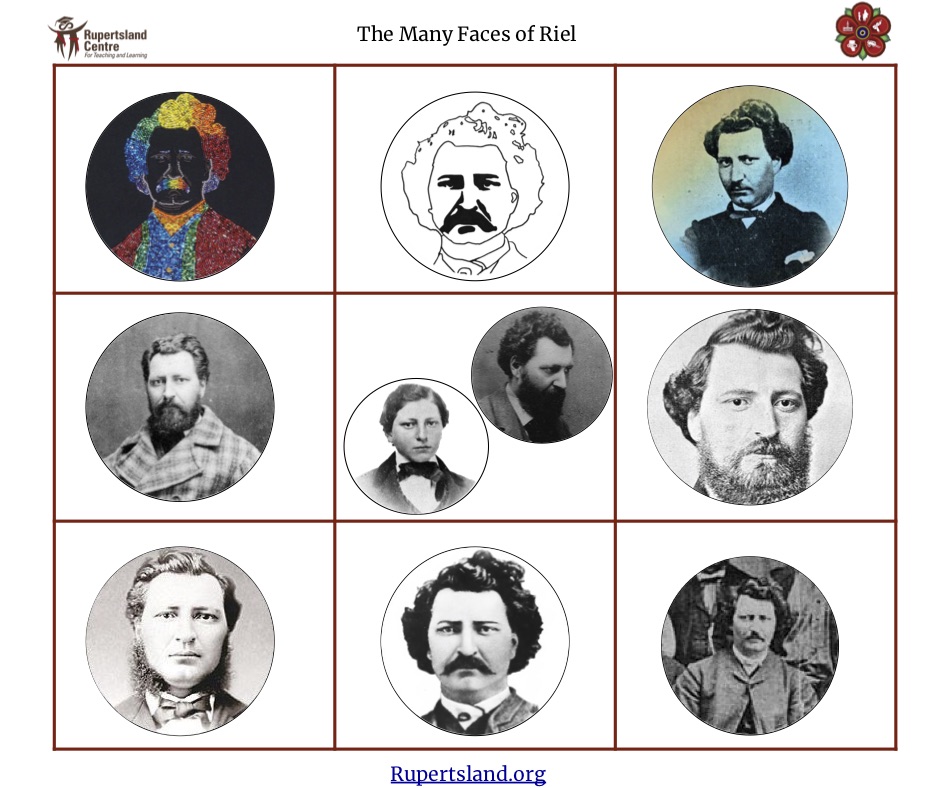Celebrating Métis Week in Your Classroom
Image Credit: The featured image above is by Yvette Cenerini (née Lagimodière). It is titled la douleur / pain (2014). It is a photomontage of five digital prints on mylar over a digital print on photo paper.
People across Canada celebrate Métis Week differently. In Alberta, Saskatchewan, British Columbia, and Ontario, Métis Week coincides with Louis Riel Day on November 16, commemorating his life, legacy, and execution in 1885. If you live in Manitoba, Louis Riel Day is a public holiday on the third Monday of February.
The Importance of Indigenous Perspectives in Education
Regardless of the time of year and what part of Canada you currently live in, it is always important to share Indigenous perspectives in your classroom. November is a great time to start. We’ll share some resources you can use to incorporate Métis culture in your lesson planning now and long term.
Find the Métis Nation Nearest You
You can check with your local Métis Nation for events and celebrations taking place in your province.
- Métis Nation of Alberta
- Métis Nation of Saskatchewan
- Manitoba Métis Federation
- Métis Nation of Ontario
- Métis Nation of British Columbia
- Northwest Territory Métis Nation
Teaching Métis History and Culture
Who are the Métis? Why is Louis Riel so important? If we as educators don’t have a deeper understanding of Métis culture, it can be daunting to plan appropriate lessons for our learners.
Who are the Métis?
The Métis are one of three Indigenous groups the Canadian government recognizes. The others are First Nations and Inuit. When teaching about the Métis, it is important to understand what makes them distinct Indigenous Peoples and why that distinction remains important.
The Métis have deep historical roots in the Red River area, as early as the 1700s. Their traditional homelands encompass the three Prairie provinces, northwestern Ontario, northeastern British Columbia, the Northwest Territories, northern Montana, and North Dakota. They are the descendants of Indigenous women (typically Cree, Salteaux, and Dene) and European fur traders (typically French, Scottish, and Irish).
A Culturally Distinct People
The descendants began speaking their own language known as Michif. They developed a distinct culture celebrated for its dances, jigs, fiddle music, and colourful, embroidered clothing and sashes. The advanced design of Métis Red River Carts was famous at the time. Métis were exceptional bison hunters. Their political will to create a distinct identity and gain recognition as a unique people heavily influences their culture today.
The Modern Métis Nation
The modern Métis Nation is very proud of its collective history. Some of these distinct aspects of their culture are still in practice today. Many organizations are working hard to bring more Métis perspectives into the classroom and beyond.
Here are a few resources to start you and your learners off in gaining a deeper understanding of the Métis people, their history, and their evolution as modern-day people.
- Rupertsland Centre for Teaching and Learning (Métis Nation of Alberta) Lesson Plans
- Louis Riel, the Red River Resistance, and Beyond
- Resilience Project Teaching Guide
Métis Lesson Plans
Rupertsland Institute (RLI) is an affiliate of the Métis Nation of Alberta. It has various excellent resources, including Métis Lesson Plans for K to 12. They cover a variety of themes from language, culture, history, and Métis Nation governance. They have also created Métis Culture Cards, which you can print off to help you expand your knowledge of Métis culture or organize your learners into groups.
Before You Start
Activate learners’ prior knowledge of Canadian, Indigenous, and non-Indigenous cultures. Consider using a graphic organizer like a word web or Venn diagram to organize learners’ thoughts and show connections between different cultures. Focus specifically on what learners know about Métis culture in Canada.
Resources
Michif
The Michif Language lesson plans for grades K to 3 include a vocabulary lesson, an animal card game, and a writing reflection activity. There is also a cross-curricular social studies, science, and ELA lesson, B is for Bannock. It explores many creative and delicious Métis culinary dishes. Learners will learn to read recipes, plan a gathering or feast for their families, and create an alphabet book.
Métis Scrip
You can dive deeper into Métis identity and rights topics with this lesson on Métis scrip for Grades 4 to 9 or Métis scrip for Grades 10 to 12. Before you teach either of these lessons, make sure you have a solid understanding of the scrip system and how it compares to the treaty system for First Nations people.
Start by showing your learners the Métis Scrip presentation to introduce the origins of scrip. Learners will consider how it’s similar and different to First Nations’ treaties. Then, they will reflect on the implications it has and continues to have on Métis’ rights.
You can run learners through the Scrip simulation activity outlined in this lesson plan if you are teaching in class. Divide the class in half. One group represents the Métis, and the other represents non-Indigenous settlers and land speculators. Through this engaging activity, learners will experience the scrip system’s effects and learn how it dispersed Métis across their homeland. End the simulation and have the learners write about their experience.
Discuss the results of scrip with learners. What similarities did they see between the simulation and the historical information in the presentation? How did the Métis feel? How do the Métis feel now? What actions can we take to right this injustice?
Extend the Learning
Link this activity to recent Métis media coverage of the Self Government Agreement signed between the Métis Nation of Alberta and the government of Canada in June 2019. How can this promote reconciliation for wrongdoings such as scrip?
Consider showing your learners other media coverage of Métis identity, like this article Exploring Identity: Who are the Métis and what are their rights. What are Métis people’s rights, and how did they come to be? Explore if there is a difference between Métis rights and other Indigenous rights and non-Indigenous rights.
Louis Riel, the Red River Resistance and Beyond
Before You Start
Refer to the Métis Historical Timeline produced by the Métis Nation of Alberta to understand why people celebrate Louis Riel (Oct 22, 1844 – Nov 16, 1885) as a bold and visionary Métis leader. The timeline will help you learn more about the rich and complicated history of the Métis Nation from the 1770s to the present day.
Resources
Louis Riel and the Red River Resistance
Louis Riel, the Red River Resistance and Beyond is a cross-curricular resource kit for grades 6 to 12, covering Indigenous studies, social studies, English, and social justice subjects. All seven resources in this kit center Métis perspectives and take learners on a journey exploring the history of the Métis and Louis Riel.
Learners will watch videos and presentations and complete handouts to gain a deeper understanding of the historical and contemporary implications of the Red River Resistance while developing literacy and historical thinking skills. You can follow the progression of the resource kit outlined in the Educators Guide, or you can use each resource on its own.
Start by showing Learning Bird’s presentation on The Rights of the Small, a minds-on activity to activate deeper thinking about human rights. Learners will analyze a mystery quote (by Louis Riel) about human rights and what it means to be a minority. They will have opportunities to think about similar power struggles between minority groups today and learn about the importance of advocating for human rights.
The Red River Resistance and Human Rights
Learners will also get the opportunity to watch Learning Bird’s Alternate Histories video resource. This video asks learners to recall important historical events in Canadian history, like the Métis Resistance led by Louis Riel. Learners will explore the idea of cause and effect. Consider a think-pair-share with your learners and ask the following questions:
- What might Canada look like today if the Red River Resistance never happened and Louis Riel, Gabriel Dumont, and the Métis Nation didn’t advocate for the rights of the Métis people?
- Consider what might Canada look like today if the outcome of the Red River Resistance was different? What about the Northwest Rebellion?
- How can we apply lessons from Louis Riel and the Red River Resistance today?
Explore the other resources in the kit. Learners will have the opportunity to create their own alternate timeline. Learners will also have a chance to have some fun with the Métis Timeline Game consolidation activity. They will demonstrate their learning by playing a game and placing Métis history in the correct chronological order.
Extend the Learning
For additional games to solidify learning, try Rupertsland interactive Tic Tac Toe, The Many Faces of Riel.
Resilience Project Teaching Guide
Before You Start
Ask learners if they have heard of any other Métis Canadians. Consider using a KWL chart to see if they know any historical or modern-day Métis political leaders, artists, musicians, or authors.
Resources
Métis Art
Refer to the Resilience Project Teaching Guide (page 18) and introduce your learners to Christi Belcourt, a critically-acclaimed Michif (Métis) artist from Ontario. You can visit Christi’s Virtual Gallery to learn more about her work and the importance of Métis beading as a vital community tradition and intergenerational activity for self-reflection and meditation.
Note: There are many other Art Cards from the Resilience Teaching Guide. It’s a great resource created by MAWA (Mentoring Artists for Women’s Art) featuring Indigenous artists with accompanying lesson plans that you can share with learners in future lessons.
Show learners Christi’s painting, This Painting Is a Mirror, and provide some time for learners to admire the intricate details. You can explain Christi’s technique of transferring beadwork into painting. Every dot represents a bead. Then consider asking learners the following questions:
- What materials and techniques did Christi use to make this painting?
- List the plants and animals you recognize in the painting (i.e., bees, blue jays, hummingbirds, moths, robins, blueberries, strawberries, oak leaves, poppies, roses, chokecherries, bunchberry flowers).
- What do you think the plants and animals represent in this painting? What can you infer about the meaning of the painting from the artwork’s title?
Métis Role Models
Share more examples of the many heroes, mentors, and role models in the Métis community. Examples include historical political leaders like Gabriel Dumont and modern-day artists and authors like author Cherie Dimaline, painter and filmmaker Leah Dorion, media artist and performer Cheryl L’Hirondelle, visual artist Robert Boyer, singer-songwriter Andrea Menard, beadwork artist Krista Leddy, and visual artist Yvette Cenerini.
As the main learning activity, have learners research and create a biography for a Métis role model of their choice. Learners can use a timeline or other graphic to present the biography to the class (e.g., role-play, comic book). Have learners share their projects with the class.
Extend the Learning
Ask learners what makes a hero. What might make a Métis person a hero in their community now and in the past? Have learners choose a mentor or hero from their own life and describe why that person is a hero to them. Learners can also examine the heroic qualities they find in themselves.
There are endless possibilities to bring Métis perspectives into the class this November and beyond Métis Week. Regardless of what you choose to do with learners, stay safe and have fun. Do you have other ideas for celebrating Métis Week? Please email us and let us know!







